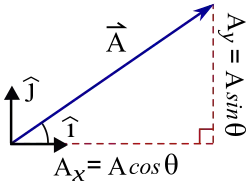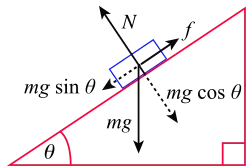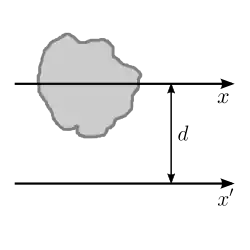OpenStax University Physics/V1/Equations
Template:EduV/announcement Equations lifted from chapter summaries in https://cnx.org/contents/[email protected]:Gofkr9Oy@10/Preface
| Do not edit this page. Instead copy and paste the source wikitext somewhere else. See these two examples: | |
|---|---|
| WSU Lake University Physics V1 equations | |
| Formulas (in compact form) | |
| Volume 2 equations are complete |
Introduction
| da | h | k | M | G | T | P | E | Z | Y |
| deca | hecto | kilo | mega | giga | tera | peta | exa | zetta | yotta |
| 1E+01 | 1E+02 | 1E+03 | 1E+06 | 1E+09 | 1E+12 | 1E+15 | 1E+18 | 1E+21 | 1E+24 |
| d | c | m | µ | n | p | f | a | z | y |
| deci | centi | milli | micro | nano | pico | femto | atto | zepto | yocto |
| 1E-01 | 1E-02 | 1E-03 | 1E-06 | 1E-09 | 1E-12 | 1E-15 | 1E-18 | 1E-21 | 1E-24 |
Units_and_Measurement
The base SI units are mass: kg (kilogram); length: m (meter); time: s (second). Percent error is
Vectors
Vector involves components (Ax,Ay,Az) and three orthonormal unit vectors.


▭ If , then Ax+Bx=Cx, etc, and vector subtraction is defined by .
▭ The two-dimensional displacement from the origin is . The magnitude is . The angle (phase) is .
▭ Any vector divided by its magnitude is a unit vector and has unit magnitude: where
▭ Dot product and
▭ Cross product where is any cyclic permutation of , i.e., (α,β,γ) represents either (x,y,z) or (y,z,x) or (z,x,y).
▭ Cross-product magnitudes obey where is the angle between and , and by the right hand rule.
▭
▭
▭
▭
▭
▭
▭
▭
▭
Motion_Along_a_Straight_Line
Delta as difference in limit of differential calculus.
▭ Average velocity (instantaneous velocity)
▭ Acceleration .
▭ WLOG set and if . Then , and , , where is the average velocity.
▭ At constant acceleration: .
▭ For free fall, replace (positive up) and , where = 9.81 m/s2 at Earth's surface).
Motion_in_Two_and_Three_Dimensions
Instantaneous velocity: , where
▭ Acceleration , where .
▭ Average values: , and
▭ Free fall time of flight ▭ Trajectory ▭ Range
▭ Uniform circular motion: where
▭ Tangential and centripetal acceleration where .
▭ Relative motion: , , ,
Newton's_Laws_of_Motion
Newton's 2nd Law , where is momentum, is mass, and is the sum of all forces This sum needs only include external forces because all internal forces cancel by the 3rd law . The 1st law is that velocity is constant if the net force is zero.

▭ Weight.
▭ normal force is a component of the contact force by the surface. If the only forces are contact and weight, where is the angle of incline.
▭ Hooke's law where is the spring constant.
Applications_of_Newton's_Laws
: friction, coefficient of (static,kinetic) friction, normal force.
▭ Centripetal force for uniform circular motion. Angular velocity is measured in radians per second.
▭ Ideal angle of banked curve: for curve of radius banked at angle .
▭ Drag equation where Drag coefficient, mass density, area, speed. Holds approximately for large Reynold's number , where dynamic viscosity; characteristic length.
▭ Stokes's law models a sphere of radius at small Reynold's number: .
Work_and_Kinetic_Energy
Infinitesimal work done by force: leads to the path integral
▭ Work done from A→B by friction gravity and spring
▭ Work-energy theorem: The work done on a particle is where kinetic energy .
▭ Power.
Potential_Energy_and_Conservation_of_Energy
Potential Energy: ; PE at WRT is
(gravitational PE Earth's surface. (ideal spring)
▭ Conservative force: . In 2D, is conservative if and only if
▭ Mechanical energy is conserved if no non-conservative forces are present:
Linear_Momentum_and_Collisions
is momentum.
▭ Impulse-momentum theorem .
▭ For 2 particles in 2D where (α,β)=(x,y)
▭ Center of mass: , and
▭
▭ Rocket equation where u is the gas speed WRT the rocket.
Fixed-Axis_Rotation
is angle in radians, is angular velocity;

▭ is tangential speed. Angular acceleration is . is the tangential acceleration.
▭ Constant angular acceleration is average angular velocity.
▭
▭
▭ Total acceleration is centripetal plus tangential:
▭ Rotational kinetic energy is where is the Moment of inertia.

▭ Restricting ourselves to fixed axis rotation, is the distance from a fixed axis; the sum of torques, requires only one component, summed as .
▭ Work done by a torque is . The Work-energy theorem is .
▭ Rotational power .

Angular_Momentum
▭ Total angular momentum and net torque: for a single particle.
▭ Precession of a top
Static_Equilibrium_and_Elasticity
Equilibrium Stress = elastic modulus · strain (analogous to Force = k · Δ x )
▭ (Young's , Bulk , Shear) modulus:
Gravitation
▭ Gravitational PE beyond Earth
▭ Energy in circular orbit
Fluid_Mechanics

- The buoyant force equals the weight of the displaced fluid. If is the weight of a cylindrical object, the displaced volume is and:
▭ and ▭
▭ Pressure vs depth/height (constant density)
▭ Absolute vs gauge pressure
▭ Pascal's principle: depends only on depth, not on orientation of A.
▭ Viscosity where F is the force applied by a fluid that is moving along a distance L from an area A.
▭ Poiseuille equation where is "resistance" for a pipe of radius and length .
Oscillations
Frequency , period and angular frequency
▭ Simple harmonic motion also models the x-component of uniform circular motion.
▭ For positive:
▭ Energy
▭ Physical pendulum and measures from pivot to CM.
▭ Damped harmonic oscillator where and
▭ Forced harmonic oscillator (MIT wiki!) where .
Waves
Wave speed (phase velocity) where is wavenumber.
▭ Wave and pulse speed of a stretched string where is tension and is linear mass density.
▭ Speed of a compression wave in a fluid
▭ Periodic travelling wave travels in the positive/negative direction. The phase is and the amplitude is .
▭ The resultant of two waves with identical amplitude and frequency where is the phase shift.
▭ This wave equation is linear in
▭ Power in a tranverse stretched string wave .
▭ Intensity of a plane wave in a spherical wave.
▭ Standing wave For symmetric boundary conditions , or equivalently where is the fundamental frequency.
Sound
Pressure and displacement fluctuations in a sound wave and
▭ Speed of sound in a fluid , ▭ in a solid , ▭ in an idal gas , ▭ in air
▭ Decreasing intensity spherical wave
▭ Sound intensity ▭ ...level
▭ Resonance tube One end closed: ▭ Both ends open:
▭ (nonrelativistic) Doppler effect where is the speed of sound, is the velocity of the source, and is the velocity of the observer.
▭ Angle of shock wave where is the speed of sound, is the speed of the source, and is the Mach number.